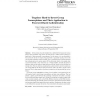127
Voted
JOC
2007
15 years 16 days ago
2007
In the setting of secure multiparty computation, a set of mutually distrustful parties wish to securely compute some joint function of their inputs. In the stand-alone case, it ha...
105
Voted
JOC
2007
15 years 16 days ago
2007
We give an informal analysis and critique of several typical “provable security” results. In some cases there are intuitive but convincing arguments for rejecting the conclusi...
141
Voted
JOC
2007
15 years 16 days ago
2007
Signcryption is a public key or asymmetric cryptographic method that provides simultaneously both message confidentiality and unforgeability at a lower computational and communica...
97
Voted
JOC
2007
15 years 16 days ago
2007
A Private Information Retrieval (PIR) protocol allows a user to retrieve a data item of its choice from a database, such that the servers storing the database do not gain informat...
127
click to vote
JOC
2007
15 years 16 days ago
2007
This paper is about the Oblivious Transfer in the distributed model proposed by M. Naor and B. Pinkas. In this setting a Sender has n secrets and a Receiver is interested in one o...
132
Voted
JOC
2007
15 years 16 days ago
2007
In the security chain the weakest link is definitely the human one: human beings cannot remember long secrets and often resort to rather insecure solutions to keep track of their ...
117
Voted
JOC
2007
15 years 16 days ago
2007
Abstract. We address one of the most fundamental problems concerning the RSA cryptosystem: does the knowledge of the RSA public and secret key-pair (e, d) yield the factorization o...
93
Voted
JOC
2007
15 years 16 days ago
2007
The internal state of the Klimov–Shamir number generator TF-1 consists of four words of size w bits each, whereas its intended strength is 22w. We exploit an asymmetry in its out...

